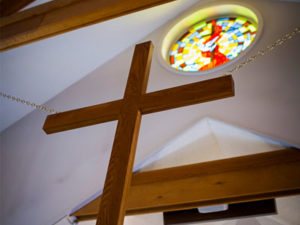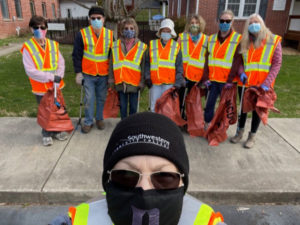“The Grace of God and the Challenge of God”
First Presbyterian Church
Sylva, North Carolina
By Benjamin Kreider
 Throughout the summer of 2020, amidst rising COVID-19 deaths and protests against racial injustice, pastor Blake Daniel of First Presbyterian Church of Sylva, North Carolina led a well-attended weekly book study John Perkin’s Let Justice Roll Down.1 After finishing the book, the group met on Wednesday, September 9, 2020 to discuss follow-up to the conversation for this largely White church. Some shared from the heart gratitude for the church’s role in facilitation, and others offered their own personal understanding of race and racism and their desires for the church to do more in forging wider connections to the community and praying for guidance.
Throughout the summer of 2020, amidst rising COVID-19 deaths and protests against racial injustice, pastor Blake Daniel of First Presbyterian Church of Sylva, North Carolina led a well-attended weekly book study John Perkin’s Let Justice Roll Down.1 After finishing the book, the group met on Wednesday, September 9, 2020 to discuss follow-up to the conversation for this largely White church. Some shared from the heart gratitude for the church’s role in facilitation, and others offered their own personal understanding of race and racism and their desires for the church to do more in forging wider connections to the community and praying for guidance.
Recent protests in Sylva to remove the Confederate soldier monument displayed prominently at the nearby the county courthouse heightened the conversation’s gravity. Halfway through the meeting a younger man who had been quiet unmuted himself and began to speak:
We’ve talked the last half hour about ‘how-to’s, and there is a lot of want at this church. We have to be intentional – if we think it will come to [our church] without thinking there will be planning – then it will take decades to happen, we’ll still be waiting . . . Perkins shared no one wants to rock the boat for fears of losing jobs, friends, family, church.
This meeting displayed the tension between the church as a comfortable place of mutual support and the discomfort of intentionality in discerning where God might be leading. This man went on to describe how Jesus helped to “bridge the gap of indifference.” As he put it, “We need to be more intentional to speak up – share the Gospel, share the love, Jesus does bridge that gap of indifference – as sinful humans Jesus bridges that gap for us.” Does this mean Jesus offered a model for the congregation to bravely discuss race? Does Jesus’s life make risk possible? Does his Spirit move the church beyond stagnation? This moment in a Zoom discussion on race illuminates other threads held in tension in the church’s wider life.
First Presbyterian Church of Sylva, North Carolina carries a proud legacy as a warm church family that prioritizes fellowship. The church functions as a place for children to grow in their faith and for community members to encounter the saving message and life of Jesus and find support in the midst of difficulty. At the same time, the members of First Presbyterian of Sylva, by placing Jesus at the center and emphasizing prayer, find themselves called beyond their own comfort to voice greater intentionality in community ministry and invitation. They are called towards communally experiencing the grace of God and cheerfully following God’s leading in combating their personal and communal challenges.
The town of Sylva is nestled into the rolling green Plott Balsam mountains of western North Carolina. The Presbyterian church was founded at the beginning of World War II in 1941, with members constructing a brick and cinderblock building. Pastor Blake described this early history as setting the foundation for the church’s identity as a “resilient and committed bunch.” The sense of a rooted presence and an unpretentious faith was exemplified by long-time pastor Bill Serjack, who served the congregation for over thirty years. Numerous people in conversations and focus groups mentioned the difficult years that followed Bill Serjack’s departure: a series of short-term pastorates and interims accompanied by a loss of members. Pastor Blake’s arrival came in 2015, after this period of upheaval.
The church takes pride in its place and its stability. The website uses imagery drawn from western North Carolina: its logo is a cross set against the background of layers of green mountains. Under a website section entitled “New Here” is a description of how the church’s theology is linked to its place and sense of history: “But one thing has stayed as constant as the Plott Balsam mountains: our commitment to love another, to love our community, and to love Jesus Christ, who first loved us.” Next to this text is an image that exemplifies this – a group of smiling church members on a hike, posed in front of a scenic waterfall. It is a small church that might draw comparisons to the badger: a compact, sturdy animal with a strong sense of place and territory. Though it can stick to itself, a healthy badger also interacts socially with others. The church is feisty in the way that it welcomes all generations, preserves individuality, and exhibits a warmth that does not paper over individual quirkiness and difference.
As I listened to members of First Presbyterian Sylva talk about their church the word family kept coming up again and again. The language of “church as family” helps them describe their experiences of God’s faithfulness made manifest through the support of the church. For some the church offered a place for their biological family – a ground where partners and children could grow in faith. They expressed gratitude for weddings, baptisms, and programming for youth and children. An older man, Bruce Henderson, described church being “about family,” smiling with pride as he told how his daughter was the fourth generation to serve as an elder in the Presbyterian church. On a Zoom focus group, Judy McManus, a woman who had been busy checking on her rolls baking for Thanksgiving the following day, described how her second son had been born very premature, requiring a long hospital stay. At that time, “there was just such an outpouring of love surrounding [his] birth” from the church. Judy began to tear up and was at a loss for words when she went on to say that her son died when he was 25. I held back here as a researcher in this holy and vulnerable moment of sharing. Others in the focus group leaned forward toward their screens in compassion, offering a word to Judy. Donna Mason spoke up, “Judy has such a love for the church, and I know that you experienced that during your hard time. . . We are just a church family that loves each other and supports, and you could call on anybody on any given day, and you would have all the support that we need.” You could feel the emotion in the Zoom room as the eyes of others listening began tear up as well. Judy, regaining her words after a long pause, began to speak slowly, “Yeah . . . I felt, so supported during all that . . . by my church family.”
Roger Murajda shared how high points in the church life aren’t always “mountain moments” but ordinary examples of being together as “church family.” He gave the story of a member who was terminally ill with cancer coming on a church group hike – enjoying the beautiful scenery, sharing this moment before she died weeks later. Roger noted that although this was “just a hike, . . . we don’t know how much that really meant to her.” He went on to reflect on moments of togetherness as a church, such as campouts and cookouts. The poignancy of this story came through in Roger’s sincerity and joy in describing the life-giving nature of church community. As our conversation was wrapping up, Roger passed that same invitation on to me: “Hopefully one day when it’s all said and done you can come by and see us in little Sylva. Let’s go on one of those waterfall hikes or something . . .” Although COVID prevented me from experiencing in person the warmth of community present at First Presbyterian of Sylva, I was able to understand why members told stories like these when I asked them about their congregation. Bruce Henderson described this warmth by saying that “this church knows how to eat . . . we’re a good potluck church.” I took him to mean that there is a genuine joy in sharing food and fellowship – that these experiences, like hikes, campouts, and supporting those going through a difficult time – are an extension of hospitality and Christian faith. Pastor Blake described it as the need to “have an ear to the ground on life outside of our four walls in the fellowship hall, outside of the casseroles and the folksy charm,” in order “to be faithful to the call and to grow as a church.”
 The church’s growth, as exemplified by a new building project, stable church finances, and a variety of community ministries the church supports, has also opened the congregation to new gifts and connections through new membership. A young woman from a more fundamentalist Baptist background described how after joining FPC Sylva with her husband, she was able to serve in leadership. She began to well up in tears and emotion, describing her experience of receiving the laying on of hands as she was blessed into leadership:
The church’s growth, as exemplified by a new building project, stable church finances, and a variety of community ministries the church supports, has also opened the congregation to new gifts and connections through new membership. A young woman from a more fundamentalist Baptist background described how after joining FPC Sylva with her husband, she was able to serve in leadership. She began to well up in tears and emotion, describing her experience of receiving the laying on of hands as she was blessed into leadership:
Sorry, it makes me cry, just thinking about it. Just being surrounded by all those people. And feeling loved and supported, especially coming from the background that I came from where women did not have a role in the church, besides helping with the meals, cleaning, and things like that . . . So to be in a leadership position, it was just overwhelming.
This description of First Presbyterian as a place where love is experienced and shown to others within the community is a testament to the church’s mission statement, which references the local place as important to self-identity: “. . . but one thing has stayed as constant as the Plott Balsam mountains: our commitment to love another, to love our community, and to love Jesus Christ, who first loved us.”
Drawing on a book he’d read, Pastor Blake shared that the church “unironically prides itself on being high invitation, low challenge.”2 He explained how the goal is to both experience the grace of God and the challenge of God. I was impacted by how the First Presbyterian congregation did Zoom worship. I saw the genuineness of people relating to each other on a first name basis, intergenerational participation, children, and family engaged in worship. The messiness of personal prayer requests and unmuting to pray parts of the liturgy and say the Lord’s Prayer together, whether intentionally or unintentionally, led to a holy cacophony of sound. Above all the holy noise of communion glasses clanking and people murmuring agreeably as they ate their communion bread was the genuineness and warmth that makes this congregation a place for people to experience God in community. The importance of prayer remained a key theme throughout my interactions. At both meetings I attended, prayer opened and closed the meeting, and at Zoom worship a variety of ages and genders shared prayer requests. The website even references how at the churches founding, “the Holy Spirit moved like in Acts.” During the anti-racist conversation, one woman suggested that prayer is part of anti-racist work and that within prayer and guidance the Holy Spirit’s leading is essential. Their theological focus on the centrality of God in its Presbyterian worship, their desire to know and follow Jesus personally, and their emphasis on charismatic prayer kept prompting me to ask what greater steps of faithfulness are we called for? Placing Jesus at the center and yielding to spirit prayer creates movement, a yearning for change, and hope for the future.
Such yearning for change shaped the challenge of God that they were confronted with in the conversations on race. First, for this congregation, it represented difficult work that members perceived God was at the center of this work. What surprised me was the detailed, intense, and personal touch in the discussion surrounding race and the Confederate Soldier Monument in Sylva as it relates to churches in town. I knew going into the conversation that it would a serious one, as the church had been doing a book study on John Perkins and wanted to talk more practically about anti-racism. Particularly striking was the sharing of how troubling the Confederate statue was for someone with biracial grandchildren and how repeatedly themes of White ignorance related to race and fear of backlash within and without the church appeared. Secondly, the reminder that if God was in the middle of the work, it would bear fruit helped to alleviate anxieties about this difficult topic. As a result, there was a passion for and clear commitment to antiracist change, as inspired by the Holy Spirit.
People shared how their Presbyterian church at times did not lead as boldly as they wanted it to. To see younger and older White people confess their ignorance about how to be anti-racist, but also their commitment to anti-racist work, was particularly moving, especially with their Southern small, rural mountain-town backdrop and its Confederate monument. One younger man shared that:
If we wait for Sylva officials or the politicians to take that statue down, it might not ever happen. Folks are afraid of votes. It goes back to “what if” and “why didn’t we” and “would we upset the congregation” . . . Those are the opportunities that will become more prevalent. We need to be more intentional to speak up – share the Gospel, share the love, Jesus does bridge that gap of indifference – as sinful humans Jesus bridges that gap for us.
At the same time, there were many mentions of what local Black leaders and individuals were doing and how the church might build better community relationships as it sought to take more bold leadership. I am curious about how the church sees itself in relation to its local community – especially amongst small-town western North Carolina. As a commitment to love their community, the intentionality to unmask differences presents FPC with an opportunity to experience the challenge of God in the race conversations. In fact, in a different meeting when one person shared the difficulty of trying to form interracial relationships in the midst of COVID, another person emphasized the necessity of continuing this work: “This could be done over Zoom . . . We can’t let what is happening in the world hinder or stop [the] work of God.” I did not sense a backwards-looking nostalgia amongst the congregation but rather a sense that despite the difficulty and frustration of the present moment, there was important work to do as God’s church.
Losing in-person warmth was difficult for a small church that had to transition online. COVID was invoked as something to pray for but also a change to how the church gathered and disseminated its message. The church website reveals detailed information on their COVID-19 plans and clear links to digital worship and virtual life. This creates a new family online and the possibility of expanding it to in-person post-pandemic, all in the endeavor to experience God’s grace together. Related to the questions of Whiteness, the aesthetics of the church building connotate small-town formal Presbyterianism, and I did not find any pictures of any people of color on the church website. Although recently the pastor has been preaching about anti-racism and the church has had book studies and discussion groups related to race, there is no explicit mention of race or anti-racism on the church’s website.
However, their most recent building project, lifted up by multiple congregants as something that led them to dream about what they might do in the aftermath of COVID, presents FPC as a church that is open to reimagine the challenge of God to them at every stage of their communal life. Church members are quick to give testimony like “the Lord and the Spirit really led us as a community when we’ve gone through expansion.” Also, Pastor Blake noted how organic and Spirit-led the process of building expansion was, undertaken without outside consultants and with a congregation member who is a contractor taking the lead. For Blake this was a “palpable example” of “God’s faithfulness and pulling his people together.” FPC is a congregation whose ecclesial imagination is towards experiencing the grace of God through family, community, and responding to the challenges of life together by Christ’s leading. In this, God is ushering them to a new “building project” of reimagining the experience of “new grace” through the “new challenge” of race conversation in their local mountain rural place.


